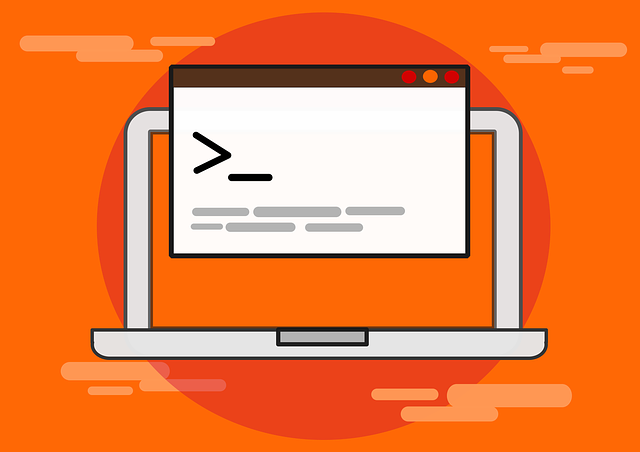Virtualization has revolutionized desktop environments by offering user-friendly interfaces that simplify the management of virtual machines (VMs), enabling users to run multiple simulated computer systems on a single physical machine without the complexities usually associated with this technology. Desktop environments like Ubuntu MATE Remix and Fedora Silverblue are particularly adept at catering to beginners, with intuitive designs that make Linux computing accessible. Ubuntu MATE Remix provides a consistent user experience and is favored for its classical GNOME 2-like interface, while Fedora Silverblue stands out due to its use of Wayland and OpenShift Container Platform, ensuring smooth system updates. For those new to virtualization, it's important to select a desktop environment with robust documentation, ease of VM management, and broad support for various guest operating systems. Performance optimization is key for both host and guest systems, as is the availability of cloud service integration and advanced networking features for more experienced users. This setup not only supports educational and software testing purposes but also efficient resource management, making virtualization a cost-effective and versatile solution for exploring computing.
Exploring the realm of computing can be daunting for beginners, especially when it comes to navigating through different desktop environments. This article delves into the essence of user-friendly desktops within virtualized settings, offering a clear understanding of their significance and role in simplifying user experience. We compare top desktop contenders tailored for novices, highlighting their strengths in virtualization scenarios. Key features that facilitate ease of use and compatibility with virtual machines are scrutinized. Additionally, a step-by-step guide is provided to assist beginners in setting up a welcoming and accessible desktop environment within a virtual machine. Whether you’re an individual exploring the digital world or an educator introducing users to computing, this article serves as a valuable resource for mastering virtualization with user-friendly desktops.
- Understanding User-Friendly Desktop Environments and Their Role in Virtualization
- Comparing Top User-Friendly Desktops for Beginners in Virtualized Setups
- Key Features to Look for in a User-Friendly Desktop Environment for Virtualization Needs
- Setting Up a User-Friendly Desktop Environment in a Virtual Machine: Step-by-Step Guide
Understanding User-Friendly Desktop Environments and Their Role in Virtualization

User-friendly desktop environments play a pivotal role in making technology accessible to individuals with varying levels of technical expertise, particularly in the realm of virtualization. These environments are designed with intuitive interfaces and straightforward functionalities that allow beginners to navigate, manage, and utilize software and resources efficiently. In the context of virtualization, these desktop environments facilitate the creation, management, and operation of virtual machines (VMs), which can simulate entire computer systems running different operating systems or applications. This allows users to run multiple ‘virtual’ computers on a single physical machine without the complexity typically associated with such tasks. The ability to separate different software environments within a single hardware setup is invaluable for educational purposes, software testing, and resource optimization, making user-friendly desktop environments an essential tool for both novices and seasoned users alike in leveraging the full potential of virtualization technologies.
The role of user-friendly desktop environments in virtualization cannot be overstated. They abstract away the technical complexities involved in setting up and managing VMs, presenting users with a more approachable interface that mimics real-world computing scenarios. This democratizes access to powerful virtualization tools, enabling individuals and organizations to maximize their hardware’s capabilities without requiring deep technical knowledge. The integration of user-friendly desktop environments with virtualization software ensures that the benefits of this technology are accessible to a broader audience, fostering innovation, experimentation, and efficient resource utilization across various fields, from education to enterprise computing.
Comparing Top User-Friendly Desktops for Beginners in Virtualized Setups

When venturing into the realm of computing, beginners often seek desktop environments that offer intuitive interfaces and ease of use. Virtualization technology plays a pivotal role in this journey, allowing users to run multiple operating systems on a single machine without needing dedicated hardware for each. Among the top user-friendly desktops designed for novices within virtualized setups, a few stand out for their performance and accessibility.
Ubuntu’s MATE desktop, available through the Ubuntu MATE Remix for virtual machines, is a favorite for its straightforward layout and classical interface elements that hark back to the traditional GNOME 2 design. It provides a predictable and consistent experience across various applications, making it ideal for those new to Linux who prefer simplicity and reliability. Another noteworthy option is Fedora Silverblue, which uses the Wayland display server and offers an immutable containerized environment through its OpenShift Container Platform. This setup ensures that system updates are seamless and non-disruptive, which can be a significant advantage in virtualized environments where stability is crucial. Both Ubuntu MATE Remix and Fedora Silverblue leverage virtualization to offer beginners a user-friendly starting point for exploring the vast potential of desktop computing.
Key Features to Look for in a User-Friendly Desktop Environment for Virtualization Needs

When selecting a user-friendly desktop environment tailored for virtualization needs, it’s crucial to evaluate several key features that facilitate seamless and efficient operations. Firstly, look for an environment with robust virtual machine management tools that allow users to create, manage, and configure multiple VMs easily. A straightforward, intuitive interface will enable beginners to navigate these tools without confusion. Additionally, the ability to support a variety of guest operating systems is essential, ensuring compatibility and flexibility according to individual or organizational requirements.
For those new to virtualization, a desktop environment that offers extensive documentation, tutorials, and community support can be invaluable. This support system helps users troubleshoot issues and learn the nuances of their chosen platform. Moreover, performance optimization for host and guest systems is a significant aspect to consider. Efficient resource allocation and management ensure that virtual machines operate smoothly without overburdening the host system’s resources. Lastly, integration with cloud services and networking capabilities can expand the potential of your virtualization setup, allowing for remote access and collaboration opportunities. By focusing on these key features, beginners can find a desktop environment well-suited to their virtualization needs that offers both ease of use and powerful functionality.
Setting Up a User-Friendly Desktop Environment in a Virtual Machine: Step-by-Step Guide

When initiating the journey into the realm of computing, a user-friendly desktop environment is paramount for beginners to navigate and learn effectively. Virtualization presents a robust solution for those seeking to explore different operating systems without the commitment of dedicated hardware. This guide will walk you through setting up a welcoming and intuitive desktop environment within a virtual machine (VM).
To commence, select a reliable virtualization platform such as VMware Workstation Player or VirtualBox, which are renowned for their user-friendly interfaces and comprehensive documentation. Install the software on your host system, ensuring you adhere to the provided installation prompts carefully. Once installed, launch the application and create a new virtual machine (VM). Choose an operating system that aligns with your learning objectives; many distributions offer user-friendly interfaces tailored for beginners, such as Ubuntu or Linux Mint.
Proceed with allocating resources to your VM, assigning a reasonable amount of CPU cores and memory to facilitate smooth operation without overloading your host system. Next, configure the virtual machine’s settings to enhance user experience, including adjusting display settings for optimal screen resolution and enabling shared folders for easy file transfer between the host and guest systems.
Upon completing the VM setup, initiate the installation of the chosen operating system. Most distributions provide an ‘easy install’ or ‘live mode’ option that allows users to test and interact with the OS before committing to a full installation. Utilize these features to familiarize yourself with the desktop environment’s layout and navigation. Once installed, personalize your workspace by adjusting settings such as wallpaper, launcher placement, and default applications to suit your preferences and aid in learning the system’s functionalities.
After setting up your virtual machine, install additional software that supports a beginner-friendly experience, such as web browsers, office suites, and multimedia players. Utilize the software center or package manager within your chosen OS to easily locate and install applications. Remember to keep your system updated with the latest security patches and feature updates to maintain a secure and efficient computing environment.
By following these steps, you can establish a user-friendly desktop environment within a virtual machine that serves as an excellent learning tool for beginners. Virtualization offers a flexible, cost-effective, and accessible platform for users to explore and master new operating systems at their own pace.
In conclusion, selecting a user-friendly desktop environment is pivotal for beginners navigating virtualized setups. This article has delved into the significance of these environments and compared top contenders suited for novice users. Key attributes such as intuitive interfaces, ease of navigation, and comprehensive support have been highlighted as essential features to consider when choosing a desktop for virtualization. The step-by-step guide provided offers clear direction on setting up a beginner-friendly desktop environment within a virtual machine, ensuring a smooth and accessible experience from the outset. For those venturing into the realm of virtualization, understanding and selecting the right desktop environment can significantly enhance their computing journey, making technology more approachable and less daunting. With the right tools and guidance, beginners can confidently explore the vast potential of virtualized desktops with ease.


























